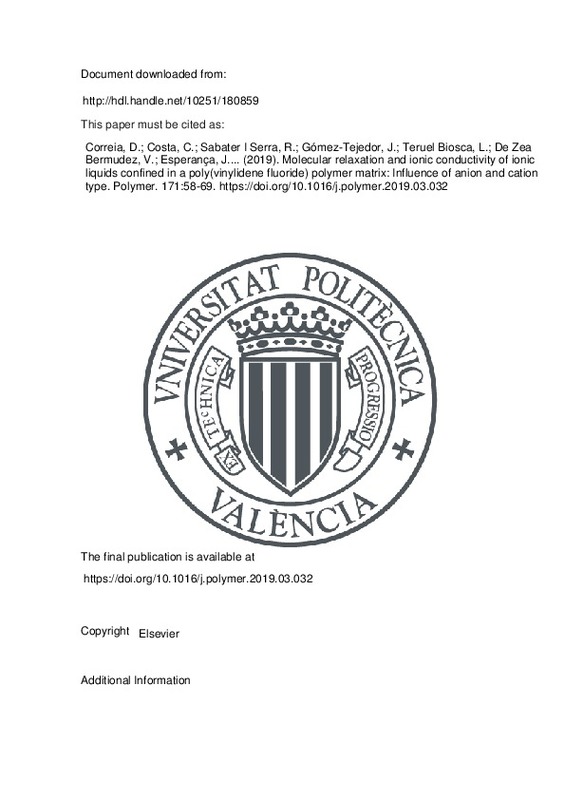JavaScript is disabled for your browser. Some features of this site may not work without it.
Buscar en RiuNet
Listar
Mi cuenta
Estadísticas
Ayuda RiuNet
Admin. UPV
Molecular relaxation and ionic conductivity of ionic liquids confined in a poly(vinylidene fluoride) polymer matrix: Influence of anion and cation type
Mostrar el registro completo del ítem
Correia, D.; Costa, C.; Sabater I Serra, R.; Gómez-Tejedor, J.; Teruel Biosca, L.; De Zea Bermudez, V.; Esperança, J.... (2019). Molecular relaxation and ionic conductivity of ionic liquids confined in a poly(vinylidene fluoride) polymer matrix: Influence of anion and cation type. Polymer. 171:58-69. https://doi.org/10.1016/j.polymer.2019.03.032
Por favor, use este identificador para citar o enlazar este ítem: http://hdl.handle.net/10251/180859
Ficheros en el ítem
Metadatos del ítem
| Título: | Molecular relaxation and ionic conductivity of ionic liquids confined in a poly(vinylidene fluoride) polymer matrix: Influence of anion and cation type | |
| Autor: | Correia, D.M. Costa, C.M. de Zea Bermudez, V. Esperança, J.M.S.S. Reis, P.M. Andrio Balado, A. Lanceros-Méndez, S. | |
| Entidad UPV: |
|
|
| Fecha difusión: |
|
|
| Resumen: |
[EN] Blends of poly(vinylidene fluoride) (PVDF) and ionic liquids (ILs) with different cations and anions have been prepared by solvent casting. The IL content was the same in all blends of the series. Molecular relaxation ...[+]
|
|
| Palabras clave: |
|
|
| Derechos de uso: | Reserva de todos los derechos | |
| Fuente: |
|
|
| DOI: |
|
|
| Editorial: |
|
|
| Versión del editor: | https://doi.org/10.1016/j.polymer.2019.03.032 | |
| Código del Proyecto: |
...[+] |
|
| Agradecimientos: |
This work was supported by the Portuguese Foundation for Science and Technology (FCT) in the framework of the Strategic Funding UID/FIS/04650/2013 and the Associated Laboratory Research Unit for Green Chemistry, Technologies ...[+]
|
|
| Tipo: |
|







![[Cerrado]](/themes/UPV/images/candado.png)


